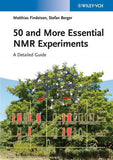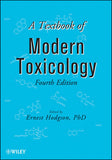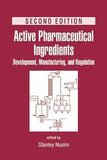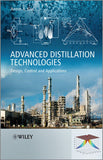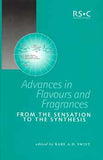Odor impressions have cast a spell over mankind since the dim and distant past. But even today, we are –consciously or subconsciously– guided by our sense of smell and the chemistry behind it. The prominent fragrance chemists Günther Ohloff , Wilhelm Pickenhagen and Philip Kraft convey the scientist, the perfumer, and the interested layman with a vivid and up-to-date picture of the chemistry of odorants and the research in odor perception. In this second thoroughly revised and updated edition they are joined by creative perfumer Fanny Grau, a rising master in this métier, who complements the scientific treatise by a concise introduction to the art of perfumery and its composition techniques.
Besides this new chapter on the creative aspects of perfumery, the book details on the molecular basis of olfaction, olfactory characterization of perfumery materials, structure–odor relationships, the chemical synthesis of odorants, and the chemistry of essential oils and odorants from the animal kingdom, backed up by many perfume examples and historical aspects. It will serve as a thorough introductory text for everyone interested in the molecular world of odors.
TABLE OF CONTENTS
Contents
Chemical Foreword ix
Perfumistic Foreword: Synthetics or Naturals? xi
Preface to the Second Edition xiii
Preface to the First Edition xvii
1 Historical Aspects 1
1.1 Scents of Time
1 1.2 Chemical Discoveries and Modern Perfumery 4
References 16
2 The Chemical Senses 19
2.1 Anatomy, Physiology, and Biochemistry of Olfactory Receptors 19
2.2 Description and Classification of Odor Impressions 26
2.3 Quantitative Odor Perception 31
2.4 Glossary 40
References 47
3 Structure–Odor Relationships 53
3.1 Physicochemical Properties of Odorants and the Concept of Osmophoric Groups 53 3.2 Structure–Odor Correlations 61
3.3 Molecular Shape and Odor: The Early Theories 63
3.4 The Concept of Profile and Bulky Groups 66
3.5 Unsaturated Compounds 70
3.6 Diastereoisomers 73
3.7 Steroid-Type Odorants 76
3.8 Odor Rules 84
3.9 Bifunctional Units: Muguet and Caramel Odorants 94
3.10 QSAR: Homology Versus Olfactophore Models 106
3.11 Enantioselectivity of Odor Sensation 115
References 121
4 Odorants from Natural Resources 131
4.1 Important Terpene Building Blocks 131
4.2 Odorants from 𝛼- and 𝛽-Pinene 134
4.3 Synthetic Odorants from Cyclic Monoterpenes 136
4.4 Acyclic Odorants of the Monoterpene Series 141
4.5 Odorants from 3,7-Dimethylocta-1,6-diene 142
4.6 Odorants by Functionalization of Myrcene 149
4.7 Odorants from (−)-Caryophyllene and (+)-Longifolene 155
4.8 Odorants from 𝛼-Cedrene and Thujopsene 158
References 161
5 Odorants from Petrochemical Sources 167
5.1 Isoprene as Starting Material for the Synthesis of Odorants 167
5.2 Isobutene and 3-Methylbut-1-en-2-ol as Starting Materials 169
5.3 Terpenoids from Isobutene 172 5.4 (−)-Menthol 174
References 176
6 Ionones, Damascones, and Iso E Super 179
6.1 Violet and Orris Odorants 179
6.2 Rose Ketones 185
6.3 Isocyclemones 194
6.4 Ionone-Type Materials in Perfumery 200
References 203
7 Essential Oils 207
7.1 Citrus Oils 207
7.2 Petitgrain Oil 220
7.3 Neroli Oil/Orange Blossoms 223
7.4 Lavender Oil 224
7.5 Clary Sage Oil 229
7.6 Patchouli Oil 232
7.7 Jasmin Absolute 239
7.8 Rose Oil 246
7.9 Geranium Oil 251
7.10 Violet Oil 254
7.11 Orris Oil 258
7.12 Osmanthus Oil 261
7.13 Vetiver Oil 268
7.14 Cedarwood Oil 274
7.15 Sandalwood Oil 277
7.16 Galbanum 284
7.17 Labdanum 288
7.18 Oakmoss 292
7.19 Incense and Myrrh 297
7.20 Black and Pink Pepper 301
References 307
8 Odorants of Animal Origin 317
8.1 Musk and Civet 317
8.2 Industrial Synthesis of Macrocyclic Odorants 323
8.3 Nonnatural Musks 333
8.4 Ambergris 342
8.5 Castoreum 351
References 356
9 Composition and Creativity: A Simple Guide to Learning Perfumery 363
9.1 Basic Motivation 363
9.2 Getting Started 364
9.3 Studies in Raw Materials: The Alphabet of Odors 364
9.4 Basic Accords 370
9.5 Study of Archetypical Schemes 373
9.6 The Composition of a Fragrance 375
References 378
Subject Index 381
Perfume Index 409
Philip Kraft (*1969) studied Chemistry at Kiel University, and obtained his Ph.D. with Werner Tochtermann on macrocyclic musks in collaboration with H&R. In 1996, he joined the fragrance research of Givaudan and was promoted to the ranks of chief chemist (2001), group leader (2008) and research fellow (2015) with a special focus on rational odorant design. He has authored 97 publications and 38 patents, invented seven commercially successful perfumery materials, and read Fragrance Chemistry at the University of Bern, Zurich, and the ETH Zurich. In 2021, he joined Symrise, Holzminden, and now offers his Fragrance Chemistry course at the University of Göttingen.


